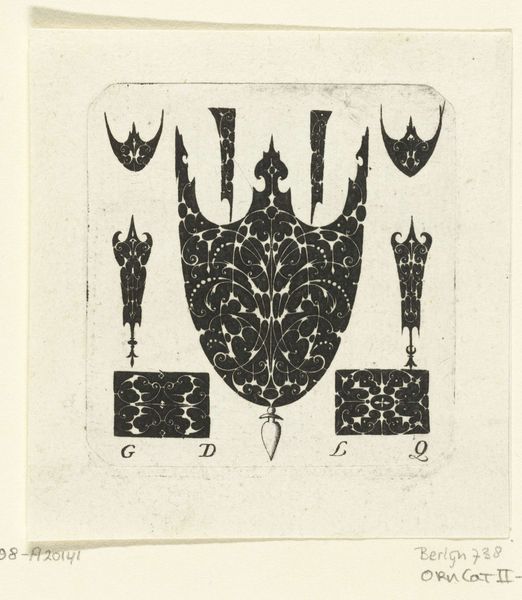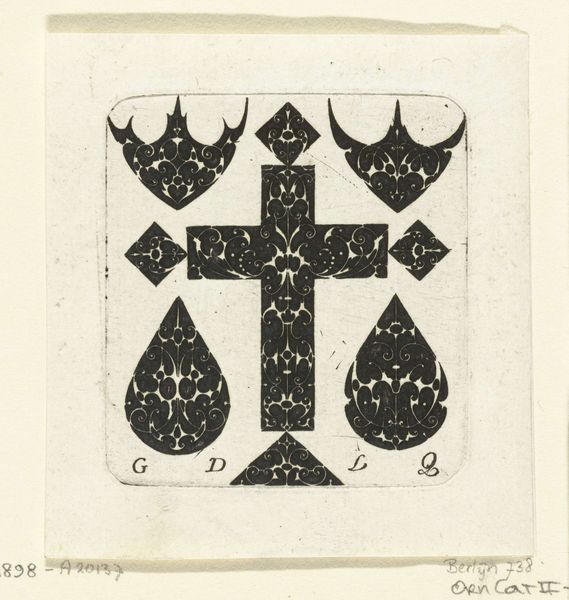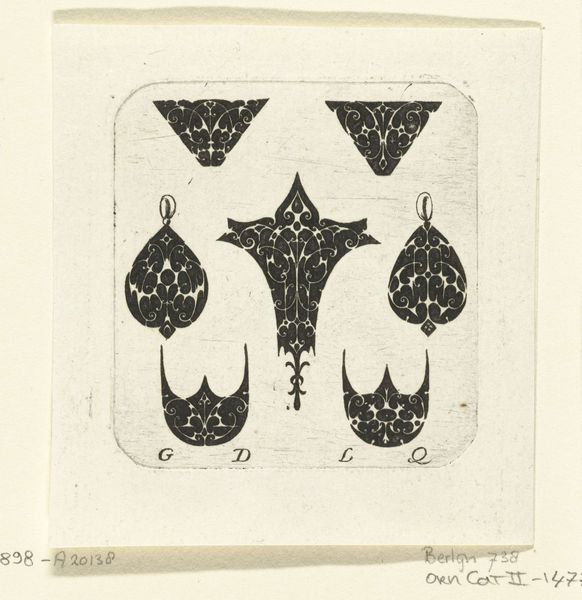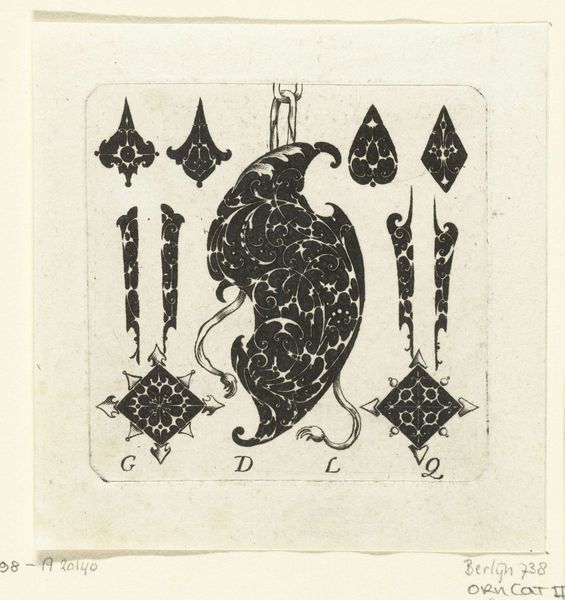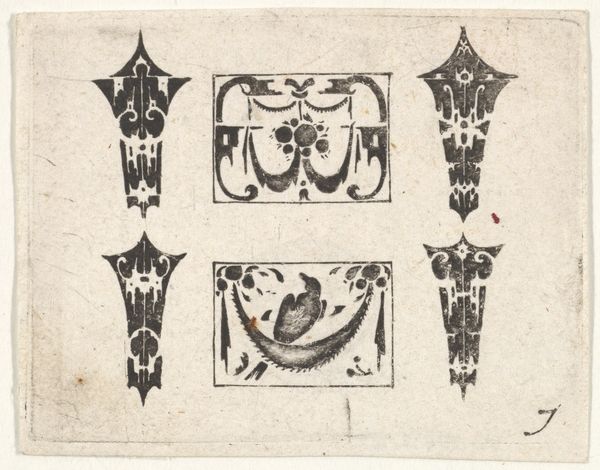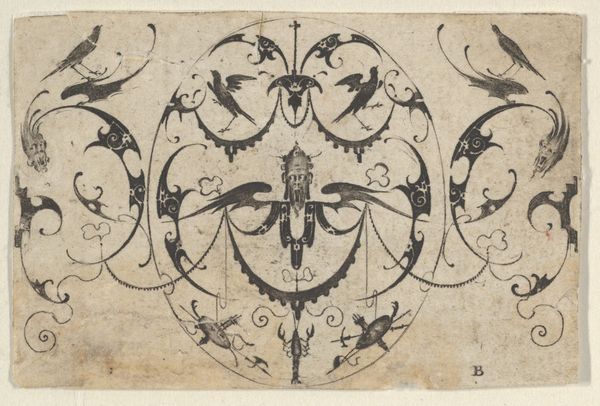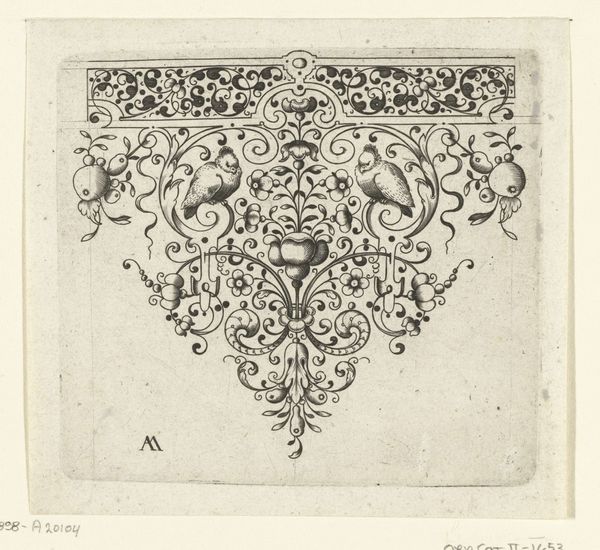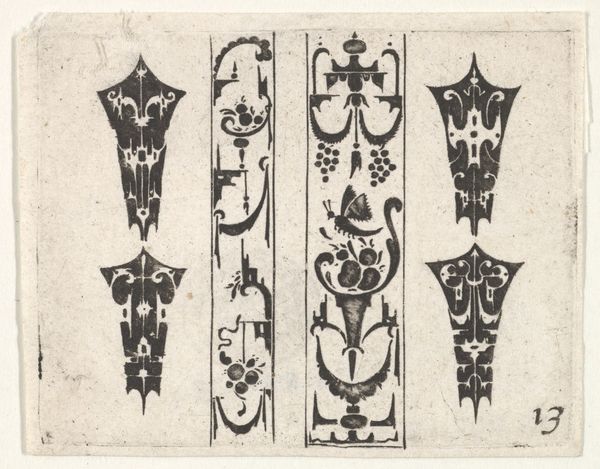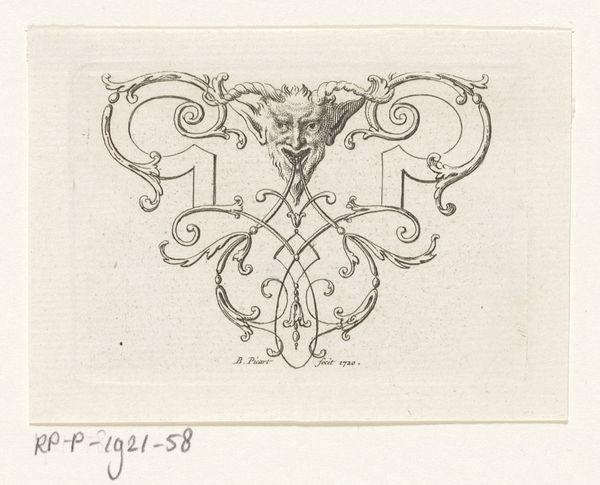
drawing, ink, engraving
#
drawing
#
baroque
#
old engraving style
#
ink
#
engraving
Dimensions: height 69 mm, width 67 mm
Copyright: Rijks Museum: Open Domain
Curator: I'm immediately struck by the density of the composition – it's a tightly packed field of black ink on pale paper, almost overwhelming the eye at first glance. Editor: Here we have Guillaume de la Quewellerie's "Cross with rounded corners between six ornaments", made around 1611. It is held at the Rijksmuseum. A baroque piece. The drawing employs ink and engraving as media. Look at how it marries religious symbolism with the period's love of decoration. Curator: The baroque influence is undeniable; I see this in the almost manic attention to detail within each ornamental shape. The ink itself looks carefully applied – a sign of skill of the artist. Do you find this ornamentation overwhelming or celebratory? Editor: Celebratory, definitely. I believe it taps into a deeply rooted human need to imbue the everyday—even sacred objects such as crosses—with beauty and complexity. Think about the psychology behind needing even abstract ideas represented concretely with symbols. This ornament can signify power and the divine will for that age. Curator: The means of production speak to a specific kind of labor as well; such detailed engraving would have demanded a long process and significant skill. It prompts one to imagine the world of consumption the artist imagined for the engravings and ornaments. This was surely aimed at some class of consumer. Editor: Absolutely. The level of refinement suggests a patronage system – someone commissioning such work for display or perhaps to use as inspiration in other crafts, thus becoming like a cultural bridge from patron to end product. It speaks to an interesting dialogue between religious institutions or noble classes who ordered similar pieces from Guillaume, and artisans who made these decorations tangible. Curator: Looking closely at the shapes inside this, you can make a cross surrounded by swirling stylized plant motifs. It's quite powerful how these images serve not only an aesthetic but also a cultural memory function, conveying the baroque sensibility. It's impressive. Editor: I find this ornament dense and fascinating. It reveals much about our relationship with beauty and cultural inheritance. The ways religious symbolism finds form with material processes remain powerfully important in this present age, don't you agree?
Comments
No comments
Be the first to comment and join the conversation on the ultimate creative platform.
